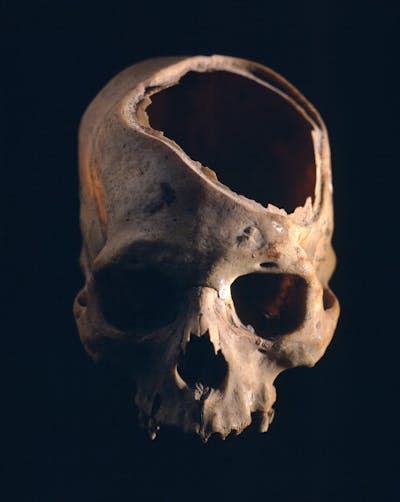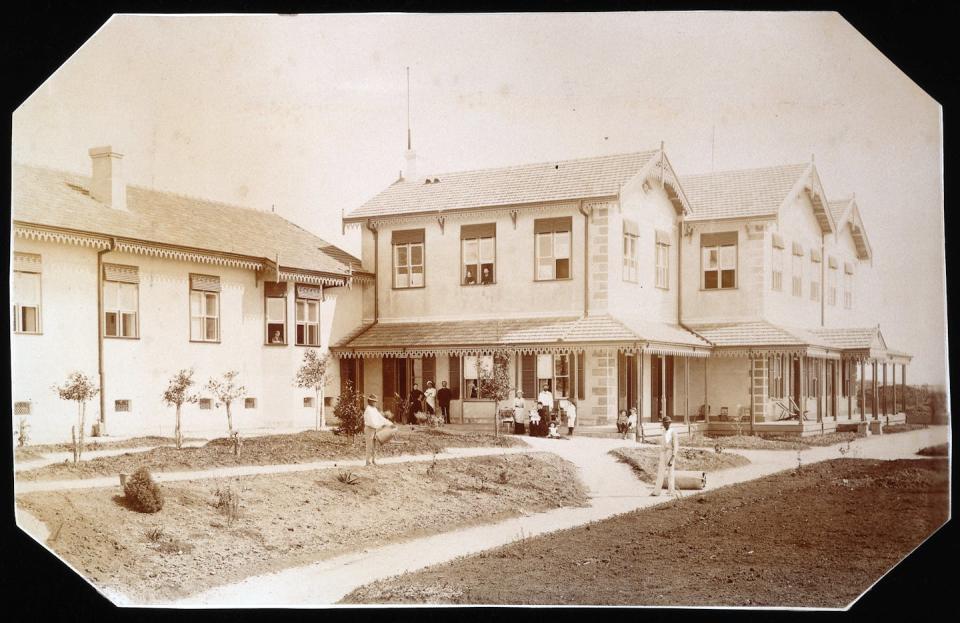One thing hunter-gatherers didn’t need to worry much about, however, was virulent infectious diseases that could move quickly from person to person throughout a large geographic region. Pathogens like the influenza virus were not able to effectively spread or even be maintained by small, mobile, and socially isolated populations.
The advent of agriculture resulted in larger, sedentary populations of people living in close proximity. New diseases could flourish in this new environment. The transition to agriculture was characterized by high childhood mortality, in which approximately 30% or more of children died before the age of 5.
And for the first time in an evolutionary history spanning millions of years, different species of mammals and birds became intimate neighbors. Once people began to live with newly domesticated animals, they were brought into the life cycle of a new group of diseases – called zoonoses – that previously had been limited to wild animals but could now jump into human beings.
Add to all this the stresses of poor sanitation and a deficient diet, as well as increased connections between distant communities through migration and trade especially between urban communities, and epidemics of infectious disease were able to take hold for the first time.
Globalization of disease
Later events in human history also resulted in major epidemiological transitions related to disease.
For more than 10,000 years, the people of Europe, the Middle East and Asia evolved along with particular zoonoses in their local environments. The animals people were in contact with varied from place to place. As people lived alongside particular animal species over long periods of time, a symbiosis could develop – as well as immune resistance to local zoonoses.
At the beginning of modern history, people from European empires also began traveling across the globe, taking with them a suite of “Old World” diseases that were devastating for groups who hadn’t evolved alongside them. Indigenous populations in Australia, the Pacific and the Americas had no biological familiarity with these new pathogens. Without immunity, one epidemic after another ravaged these groups. Mortality estimates range between 60-90%.


The study of disease in skeletons, mummies and other remains of past people has played a critical role in reconstructing the origin and evolution of pandemics, but this work also provides evidence of compassion and care, including medical interventions such as trepanation, dentistry, amputation and prostheses, herbal remedies and surgical instruments.
Other evidence shows that people have often done their best to protect others, as well as themselves, from disease. Perhaps one of the most famous examples is the English village of Eyam, which made a self-sacrificing decision to isolate itself to prevent further spread of a plague from London in 1665.

In other eras, people with tuberculosis were placed in sanatoria, people with leprosy were admitted to specialized hospitals or segregated on islands or into remote areas, and urban dwellers fled cities when plagues came.
The archaeological and historical record are reminders that people have lived with infectious disease for millennia. Pathogens have helped shape civilization, and humans have been resilient in the face of such crises.
This article is republished from The Conversation, a nonprofit, independent news organization bringing you facts and trustworthy analysis to help you make sense of our complex world. It was written by: Charlotte Roberts, Durham University; Gabriel D. Wrobel, Michigan State University, and Michael Westaway, The University of Queensland
Read more:
Michael Westaway receives funding from the Australian Research Council.
Charlotte Roberts and Gabriel D. Wrobel do not work for, consult, own shares in or receive funding from any company or organization that would benefit from this article, and have disclosed no relevant affiliations beyond their academic appointment.



